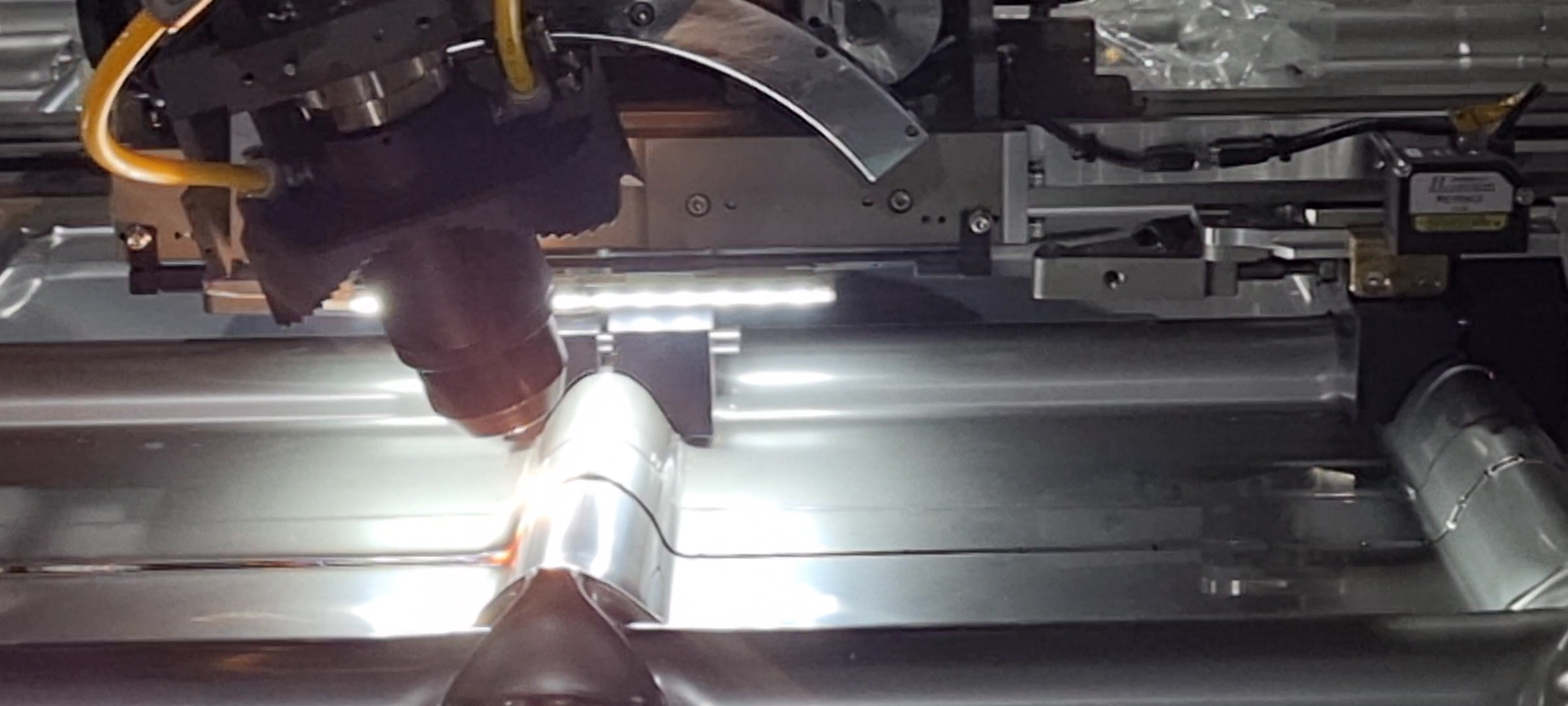SHI Develops the Maritime Industry’s First-Ever High-Speed Welding Laser Robot
2023-09-21

- Welding membrane panels with the new robot is five times faster than before, thus improving the productivity of the cargo holds of LNG carriers.
- SHI plans to expand the robot’s application to the cargo holds of liquefied hydrogen carriers in the future.
On the 21st, SHI announced its development of the maritime sector’s first-ever ‘high-speed welding laser robot’ which significantly improves the speed of welding membrane panels used in the cargo holds of LNG carriers.
The newly developed high-speed welding laser robot is expected to boost productivity of constructing liquefied natural gas carriers as it is up to five times faster than the traditional Plasma Arc Welding (PAW) methods.
The construction process of the LNG cargo holds is largely divided into insulation installation and membrane construction. The construction of membrane panels, which are directly in contact with cryogenic liquefied natural gas, is mostly done through complex welding work, thereby is highly sophisticated and time-consuming.
※ The welding length of the membrane panels of the four cargo holds mounted on one 174,000 cbm LNG carrier reaches 60km, which is equivalent to the straight line distance from the capital Seoul to the port city of Pyeongtaek.
A development of a new welding technology was required as the industry was struggling to secure qualified welders and there was limitation to the enhancement of traditional PAW methods’ productivity.
Against this backdrop, SHI’s Production Technology Research Center has been developing a high-speed welding robot optimized for membrane cargo holds by applying the technical characteristics of laser welding since 2021.
The ‘high-speed welding laser robot’ uses △a wobble method, rotating the laser beam at precise intervals and speeds, features △defocusing capabilities to create a wide bead width and △a laser displacement sensor to automatically locate curved welding positions.
The robot is being highlighted as an innovation that significantly raises construction productivity as it can weld a 2-meter-long membrane panel in under one minute as opposed to traditional PAW methods, which require around five minutes.
Samsung Heavy successfully completed a test of its high-speed welding laser robot on KC-2C, a South Korean-developed LNG cargo containment system and plans to test it on GTT`s Mark III containment system to secure final client approvals and fully adapt the technology to the production process.
“The high-speed welding laser robot will be a core technology for us to maintain our overwhelming competitiveness in the construction of cargo holds, which is the key process in building an LNG carrier”, said Doo-jin Choi, head of Samsung Heavy’s Product Technology Research Center. “We will expand the usage of the robot to build cargo holds of liquefied hydrogen carriers in the future.”
